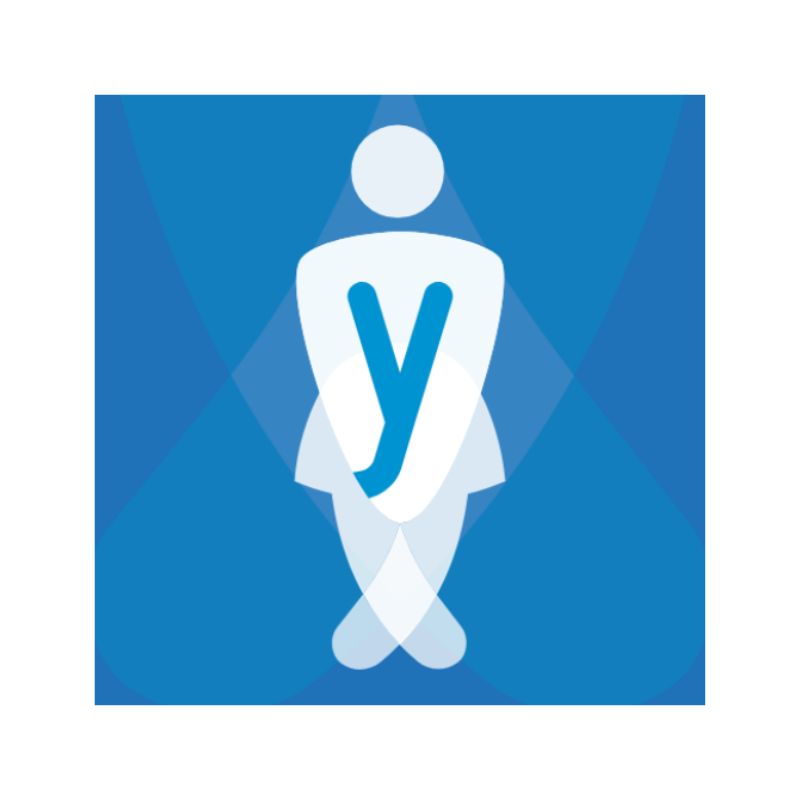Worried about leaking wee? Here's how to prevent and tackle bladder problems
Up to 14 million people in the UK are affected by urinary issues, but here's how to help yourself today


Midlife women often joke about letting ‘a bit of wee out’ when they do anything too physical, such as bouncing on a trampoline or carrying heavy shopping. Even a sneeze or a laugh could be high-risk at times.
Bladder complaints such as incontinence, the urge to go and nocturia (weeing in the night), can become more common as we get older – yet many women feel too embarrassed or ashamed to talk about it.
The truth is, life is too short to put up with it any longer. Here’s how to sort your bladder issues for good, from using the best pelvic floor trainers and finally mastering pelvic floor exercises to understanding what may be causing your bladder problems, and more.
Reasons for bladder problems
Leaking during exercise or when you cough or laugh can be frustrating, debilitating and embarrassing. "It’s a huge problem for many women," says consultant gynaecologist Mr Vivek Nama.
"The impact shouldn’t be underestimated – it can limit travel choices and freedom, as well as confidence, sexual intimacy and sexual pleasure."
There are several reasons why incontinence occurs – and different types. "Stress incontinence – this is when urine leaks when your bladder is under pressure – is usually caused by the weakening or damage to the pelvic floor muscles or the urethral sphincter," explains Mr Nama.
"Urge incontinence – a sudden, intense need to pass urine and not being able to hold it – can be caused by a number of things, such as a bladder infection, inflammation, diseases or injury."
Sign up to our free daily email for the latest royal and entertainment news, interesting opinion, expert advice on styling and beauty trends, and no-nonsense guides to the health and wellness questions you want answered.
50% of UK women will have a urinary tract infection (UTI) at some point in their lives, according to the NHS – and the frequent urge to wee is a common symptom. UTIs can be easily treated, so see your GP if you suspect this could be the cause.
Methods to tackle bladder problems

Fortunately, there’s hope – and help. "Lifestyle changes involving adjustments in daily activities, fluid intake and dietary choices alleviate stress on the pelvic floor and bladder," says Mr Nama. You should also pay attention to any habits that may be making your pelvic floor issues worse.
"Pelvic floor muscle exercises (or Kegels) can strengthen muscles around the bladder and urethra, contributing to improved control."
If you’ve been suffering in silence, now is the time to make positive changes. "Women want to be strong, vibrant and fit, and incontinence doesn’t go with that," says Stephanie Taylor, founder of pelvic healthcare brand Kegel8.
Take a look at the following treatments: if one doesn’t work, don’t be disheartened – something else might. Many of these options are available on the NHS, so speak to your GP.
Additionally, absorbent underwear can be a fallback to help you feel more confident. The latest designs from brands such as Nixi knickers are sleek, discreet and comfortable.
Do regular pelvic floor exercises
It’s never too early to start these exercises, but they become imperative as women age. One in two women may experience bladder leaks during menopause, yet 30% of us don’t do any pelvic floor exercises at all, according to research by Always Discreet.
"Pelvic floor exercises are not only important when symptoms arise, but we can do them to prevent problems," says pelvic health physiotherapist Clare Bourne. "These muscles are also responsible for bowel control, and are important for sexual wellbeing."
To do your exercises, lie down flat on your back on the floor or a bed. Squeeze the muscles you use to stop urine flow for two seconds, then relax for two seconds. Each week, add one second, until you can squeeze for 10 seconds. Repeat this 10-15 times per session, at least three times a day.
Use pelvic floor trainers
Home aids to strengthen your pelvic floor, and to prevent stress and urge incontinence, can be very effective, and work within weeks if you learn how to use a pelvic floor trainer.
Our team of expert reviewers have tested numerous pelvic floor trainers over the last three years, and consulted with the experts. Below are our three favourite models.

This wearable device sends alerts to your phone to let you know how to keep your Kegel practice in check. It's an effective, comfortable choice that also allows you to closely monitor your progress, and our tester thinks it's unbeatable for efficacy.

If you already know the Kegel exercises, you need to see results, then this more affordable, no-complication trainer is excellent. Straightforward to insert, use and see results from, this is a no-nonsense option if you don't need the extra help of the Elvie.

You can get access to this NHS-made app for almost nothing (£2.99) and get access to programs to help you train your pelvic floor just by having your phone to hand. For beginners or those looking for something to supplement the device they already own, it's a no-brainer. Available on the App Store and Google Play.
Other options we love include the Perifit Pelvic Floor Trainer, which is controlled via a phone app, along with the Kegel8 Exercise Weights Set.Read about these and more recommendations in our guide to the best pelvic floor trainers.
Hypopressive training
Unlike conventional exercises that target pelvic floor muscles, hypopressives engage the entire core and deep abdominal muscles while decreasing intra-abdominal pressure, explains Nikki Scott from UK Hypopressives.
"This holistic approach improves function, core stability and posture, and can be beneficial for individuals dealing with bladder weakness and incontinence by addressing root causes, such as weak pelvic floor muscles and poor abdominal support."
Pessaries
"A daywear pessary provides support to the urethra and bladder neck and prevents leakage – especially during physical activities," says Stephanie.
These prosthetic devices are inserted like a tampon, making them a flexible choice. Some women can’t use them, so check with your GP first.
Tackle urine leaks at night
Fed up with waking regularly to pee? You might be experiencing nocturia – it can be caused by anything from an overactive bladder and UTIs to high blood pressure, but there are ways to manage it.
Never hold it in
Many of us can’t be bothered to stagger to the bathroom in the middle of night, but holding in wee at night for too long can cause harmful bacteria to build up, warns Stephanie.
Retrain your body clock
If you’ve been getting up at the same time during the night for years, your body’s internal clock has likely got into the habit of waking up at a specific time, says Stephanie, so it’s a case of tricking it to wake at alternate times.
To do this, Stephanie suggests emptying your bladder as usual before bed. "Then, for a few nights in a row, set your alarm for an hour before you usually wake up needing to pee," she says. "Push the alarm back an hour every couple of nights until you eventually sleep through. This will help break this routine."
Avoid diuretic drinks
Tea, coffee, hot chocolate and cola, as well as alcohol, can irritate the bladder, so we pee more. Avoid acidic (citrus fruits and tomatoes) and spicy foods too.
Take a daytime nap
Nocturia caused by swollen legs or ankles? An early-afternoon nap with your legs raised to reduce swelling may help.
Monitor your sleep hygiene
Your sleep hygiene is so important – if your bedroom is too hot, cold or bright, if your mattress isn’t comfy or if a snoring partner or your own sleep apnoea disturbs you, you are likely to be sleeping lightly, and a full bladder may wake you sooner.

This article first appeared in the August 2025 issue of woman&home magazine. Subscribe to the magazine for £6 for 6 issues.
Faye M Smith is an award-winning journalist with over 20 years experience in the magazine industry. Her continued work in the area of natural health won her the coveted title of the Health Food Manufacturers’ Association (HFMA) Journalist of the Year Award 2021. Currently Group Health Director across several magazines including woman&home, Woman, and Woman’s Own, Faye specialises in writing about women’s health, especially menopause, relationships and mental health.
You must confirm your public display name before commenting
Please logout and then login again, you will then be prompted to enter your display name.
